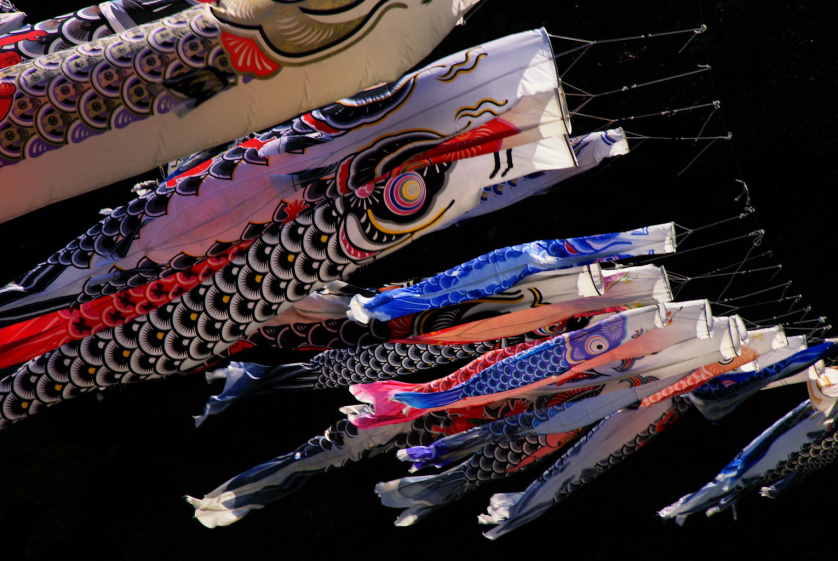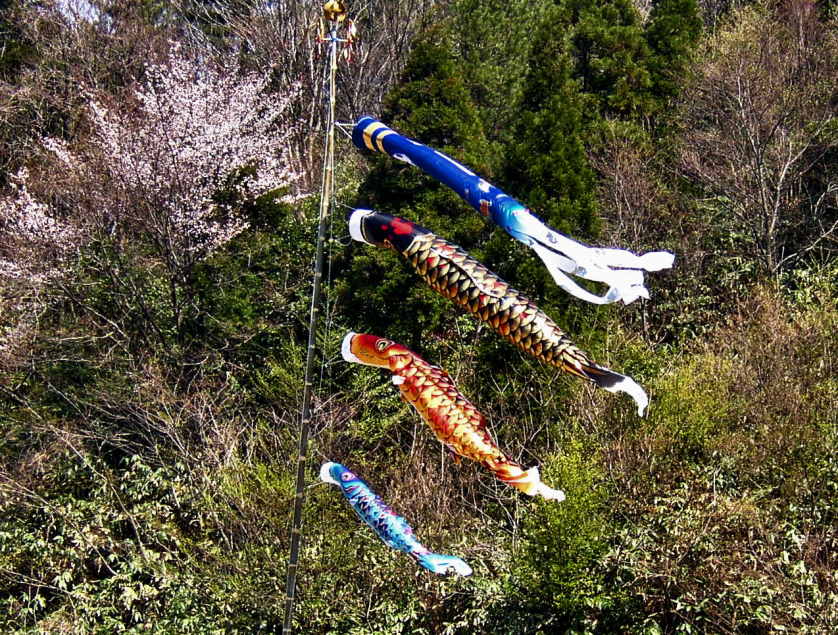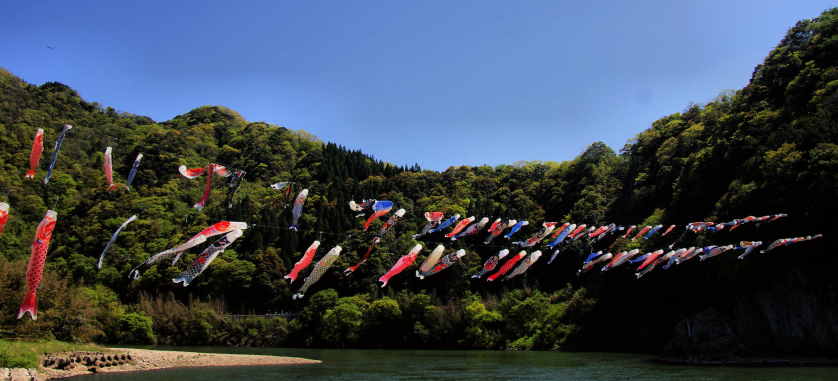Koinobori & Children's Day 鯉のぼり
Jake Davies
 |
| Towards the end of April, large groups of koinobori carp streamers start appearing in readiness for Children's Day on May 5th |
May 5th in Japan is Kodomo no Hi, Children's Day when the Japanese celebrate their children, and the most visible sign of the approach of Children's Day is the appearance from mid-April onward of the colorful windsocks known as Carp Streamers or Koinobori.
 |
| Suspended across a river is one of the more dramatic locations to see koinobori |
Children's Day in Japan
Children's Day is the last of four National Holidays that fall at the end of April and early May that collectively are known as Golden Week, and with many companies giving their employees 7 to 10 days off, Golden Week has become the second biggest holiday and vacation time in Japan after the New Year holidays.
Children's Day, the last of the Golden Week National Holiday days was not established until 1948. Prior to that it was known as Tango no sekku, commonly called Boy's Day, and it was in that form that the association with koinobori began.
 |
| Colorful koinobori carp streamers celebrate Children's Day |
Chinese Influence
Ancient Japan adopted the calendrical and numerological system from China, In this system specific dates were laden with symbolic meaning, and the 5th day of the 5th month was a seasonal court festival, along with the 1st day of the 1st month, Oshogatsu, New Year, 3rd day of the 3rd month, Hina Matsuri, the Doll Festival, 7th day of the 7th month, Tanabata, and the 9th day of the 9th month, Kiku Matsuri.
These festivals originated in rites of protection against evil, and among the common people these days took on their own meanings, with notably Hina Matsuri being celebrated as Girl's Day, and Tango no sekku as Boy's Day, and it was in this form that May 5th became associated with koinobori.
On May 5th families would celebrate their male children, putting up displays of Kintaro dolls, based on a legendary Heian Period samurai, Sakata no Kintoki, as well as Kabuto, samurai helmets and sometimes whole miniature suits of samurai armor. In the Edo Period banners bearing the image of carp were added to the displays.
 |
| Japanese koi kept in the canals of Tsuwano Castle town where they were used as an emergency food source |
Carp
The carp is native to the waterways of Japan and was a prized source of food. In the former castle town of Tsuwano in Shimane, the drainage canals of the town were stocked with carp for use as an emergency food in case of siege, and today visitors can still see them.
Most people however, will think of the ornamental, multi-colored, koi that are a relatively recent development but which are now a common feature not just of traditional Japanese gardens but garden ponds throughout the world.
Symbolism
In Japan the koi has come to represent strength, courage, endurance, perseverance, and health, and these attributes gave been derived from a well known, ancient Chinese tale of a golden carp that swam upstream of the Yellow River, eventually swimming up a waterfall and being reincarnated as a dragon.
The qualities attributed to the koi were those most valued by the samurai and wished for for their sons.
One theory how the koi became associated with Boy's Day was that when the Shogun had a son, the news was announced by raising carp flags.
 |
| Koinobori flying at a mountain park |
Displaying koinobori
The traditional way of displaying the koinobori was at the top of a tall bamboo pole. At the top would be the largest, black-coloured koinobori representing the father of the family fukinagashi (吹き流し).
Followed by a red koinobori for the eldest son of the family, followed by decreasingly sized ones in blue, green, purple, and orange, for any younger sons.
When Boy's Day switched to Children's Day the symbolism changed somewhat with the second, red, Koinobori coming to represent the mother, and often pink being used instead of red.
The other colors came to represent both sons and daughters. In fact, more and more these traditional meanings have been discarded and some families simply fly koi representing just the children of the family who are still at home.
 |
| The traditional method of displaying koinobori, now found mostly only in the countryside, is atop a tall bamboo pole |
Nowadays the most common way to see koinobori is not in the single displays put up by families, but in large public and civic situations.
A very popular site is strung across a river, where when the wind blows it most looks like carp swimming against the current. Other popular spots include parks, strung between buildings, and increasingly at shopping malls and retail parks.
 |
| Dozens of large koinobori across the Gonokawa River in Shimane |
Purchase a Range of Koinobori from Japan
Purchase a selection of koinobori carp streamers from GoodsFromJapan
Related
Daruma Dolls - History & Symbolism









